“I like to roost a gobbler ultra-tight,” says Mark Drury who has perfected the strategy in the past couple of seasons. “I sneak within 50-60 yards of the roost tree in total morning darkness and wait for the heart pounding action to begin.”
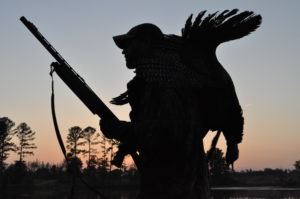 Roosting turkeys is standard operating procedure for most spring hunters and Drury has taken this tactic to a whole new level. Hunting across the country, he finds that turkeys usually fly up, or are about to, as the sun sinks below the horizon at a time that finds him in the region of historical roosts. “I may start with an owl hoot, coyote howl, or an excited hen-calling sequence hoping to coax a bird to shock gobble,” says Drury. “I’ve learned that a fired-up tom going to roost often retains his vocal habit the next morning. If multiple turkeys respond, I will focus on the one that gobbles the most or roosts alone.”
Roosting turkeys is standard operating procedure for most spring hunters and Drury has taken this tactic to a whole new level. Hunting across the country, he finds that turkeys usually fly up, or are about to, as the sun sinks below the horizon at a time that finds him in the region of historical roosts. “I may start with an owl hoot, coyote howl, or an excited hen-calling sequence hoping to coax a bird to shock gobble,” says Drury. “I’ve learned that a fired-up tom going to roost often retains his vocal habit the next morning. If multiple turkeys respond, I will focus on the one that gobbles the most or roosts alone.”
Approaching the Roost
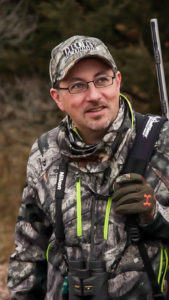 Once the gobbler flies into a tree, Drury moves quickly and quietly towards the location, trying to get a response at five-minute intervals. “From fly-up to darkness isn’t a long time and you can’t use a flashlight,” Drury says. As darkness approaches, he throws on the breaks and sneaks within 80 yards of the roost, searching 30 yards ahead for the exact tree against which he’ll sit in the morning.
Once the gobbler flies into a tree, Drury moves quickly and quietly towards the location, trying to get a response at five-minute intervals. “From fly-up to darkness isn’t a long time and you can’t use a flashlight,” Drury says. As darkness approaches, he throws on the breaks and sneaks within 80 yards of the roost, searching 30 yards ahead for the exact tree against which he’ll sit in the morning.
This process sounds simple, yet it’s one thing to sneak on a turkey roost in the last minutes of daylight and another to relocate the same spot in total morning darkness. Remember, you can’t use a flashlight to find the roost and sneaking in quietly in the pitch-black can be challenging. Hunters often lay sticks or limbs across a logging road in the evening to discretely mark a starting point for the next morning. If you find a large tree or other obstacle that will make a good set-up location, lean a branch against a tree and it will be easier to re-locate in the dark. In the morning, you want to be confident that you are in the right location.
Scan a Snag
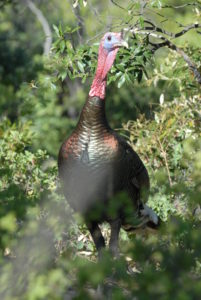 Mid-Atlantic gobblers roost in a variety of locations from tall, barren trees along creek bottoms to the deep woods of remote mountain timber. If you are lucky enough to hunt the edges of agricultural land or water routes, you may be able to spot turkeys roosting against the morning sky.
Mid-Atlantic gobblers roost in a variety of locations from tall, barren trees along creek bottoms to the deep woods of remote mountain timber. If you are lucky enough to hunt the edges of agricultural land or water routes, you may be able to spot turkeys roosting against the morning sky.
At the first hint of dawn, use binoculars to scan the skyline and you may be amazed at what you see. Jack Lovell, of Hagerstown Maryland, used this tactic exclusively and often selected his set-up spot by glassing turkeys in trees that bordered a local creek. He could not only spot turkeys but could also see the beard size of a roosting tom that often strutted on the limb just before fly-down. Jack would sneak in close, often under the roost, and has had toms actually pitch down within a few feet of his location.
Darkness Matters
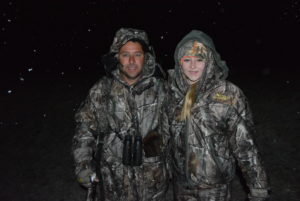 Drury used this tactic on a savvy gobbler last spring. After sneaking into position, a full hour before daylight, he and a friend were delighted to hear three gobblers light up. The duo resisted the temptation to call, allowed the toms to fly down, and then lured them into range with very soft, almost inaudible yelps. “Even if you don’t kill a turkey, you learn so much about the fly-down process and why some hunts fail,” says Drury. “I’ve seen as many as 15 hens come to a single roost tree. Another time, I had to compete with a hen and lost, however, once the tom courted that bird, it came looking for me. Tight-roosting a gobbler doesn’t work every time, but you can’t beat it for optimum excitement.”
Drury used this tactic on a savvy gobbler last spring. After sneaking into position, a full hour before daylight, he and a friend were delighted to hear three gobblers light up. The duo resisted the temptation to call, allowed the toms to fly down, and then lured them into range with very soft, almost inaudible yelps. “Even if you don’t kill a turkey, you learn so much about the fly-down process and why some hunts fail,” says Drury. “I’ve seen as many as 15 hens come to a single roost tree. Another time, I had to compete with a hen and lost, however, once the tom courted that bird, it came looking for me. Tight-roosting a gobbler doesn’t work every time, but you can’t beat it for optimum excitement.”



















![The Best Deer Camp Chili [VIDEO] Deer Chili Ingredients, Tomatoes, Chili Spices](/wp-content/uploads/2015/10/Deer-Chili-Deer-Camp-Recipe-218x150.jpg)
![How to Call Elk Early in the Season [VIDEO]](/wp-content/uploads/2016/08/byers003-218x150.jpg)

![Mark-Drury[1]](/wp-content/uploads/2018/04/Mark-Drury1.jpg)
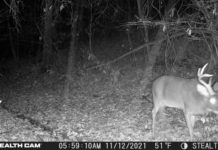



![Idiots Disturb Hunter: How Would You Have Handled It? [VIDEO]](/wp-content/uploads/2015/10/DSC00110-e1474487693878-100x70.jpg)
![Albino Buck Shocked to Shed His Antlers [VIDEO]](/wp-content/uploads/2015/10/AlbinoDeer-100x70.jpg)